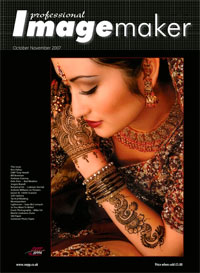articles/Lighting/lightingfordigital4-page1
Lighting for Digital 4 - part 1 of 1 2 3
by Dave Montizambert Published 01/10/2007

Dave Montizambert looks at Metering - a lost art?
The other day Penelope Cruz stopped by my place to pick up a few things she had left behind from her last visit. I told her I was in the midst of prepping for an article that revolved around Ansel Adams' Zone System and would she oblige me by posing for the example images. She of course said yes and the images you see are the result of that shoot. Okay I'm lying, just another tawdry attempt to lure you into reading another of my photographic rants. The truth is the woman in the accompanying photos is not Penelope Cruz but rather another fine actress by the name of Julie Brar. Hopefully you are not too upset with me and will read on.
With that out of the way I hope you are ready for what follows because it is a mouthfull, I do however summarise it near the end.
In digital education today there is still some debate whether one should expose for the shadows, expose for the highlights, or just point a handheld meter at the camera lens. To understand which to use, we need to go back in time to understand where these concepts originated.
Back in my early film days, when I first started to learn how to light subjects and scenes, I was never really sure how to meter the results with a hand-held meter. Not unlike digital today, the question was, 'Should I meter for the shadows or for the highlights or should I simply give up and hope for the best by pointing the meter at the camera lens?' To add to my confusion I could never get a straight answer from those I looked up to; they all agreed that exposing for the highlights was out but could not agree on whether you should expose for the shadow or average the lighting by pointing the meter towards the camera. On top of this they were unclear about when to take incident readings and when to use reflective readings - I suspect they were not all that sure themselves. Looking back at the metering tips that I did glean from my superiors - metering for the shadows and pointing the meter at the camera - were not actually incorrect, just incomplete; let's fill in those gaps now.

Exposing for the shadow is probably the most badly abused metering method of all. Ansel Adams' golden rule, 'Expose for the shadows, and develop for the highlights', summarises his B&W Zone System which is designed to control contrast through exposure and film development manipulation after the light has come from a subject. Its forte is in shooting situations where using only available light is desired or practical and where only contrast needs to be controlled, not light quality (how soft or hard is the light). If contrast control through development is not an option (ie colour film), or if you need control of light quality, then you need to be able to affect the light before it strikes the subject. If this is the case then you must either bring in artificial lighting such as strobe/flash and or manipulate available lighting with equipment such as diffusion flats or reflectors.
The B&W Zone System cannot be applied effectively with colour film; altering processing time for contrast control throws off colour balance. That is why when colour negative film came out, we were told to expose for the shadows and print, not develop for the highlights. The other reason for exposing for the shadows is it overexposes your colour film somewhat. A bit of overexposure is advantageous with colour negative film because the base plus fog of the film gives a greenish colour caste to the blacks in the print. If the film is overexposed then it needs longer printing time to print for the true tonality of the subject which means that the black areas, (the clear portions of the film), have light burning through their base plus fog for a longer time destroying any colour shift. This system does work to some degree, but it limits one's creativity. I say 'limits', because to keep printing time consistent, you have to keep the shadow density the same in all shots otherwise your printing time will change every time you alter the shadow density and efficiency goes out the window. This means part of your creativity has been taken away if you can't change mood in a shot through different shadow densities.
The method I used when shooting colour negative film was this - with normal development I would over-expose my160-ISO colour negative film by one stop by rating it at 80-ISO, then instead of exposing for the shadow I would expose for a hypothetical middle grey tonality. This gave me consistent exposures and printing times no matter how much I changed the shadow density, plus it allowed longer printing times to lose the green shift in shadows.
You are currently on page 1 Contact Dave Montizambert
1st Published 01/10/2007
last update 09/12/2022 14:55:49
More Lighting Articles
There are 16 days to get ready for The Society of Photographers Convention and Trade Show at The Novotel London West, Hammersmith ...
which starts on Wednesday 14th January 2026





